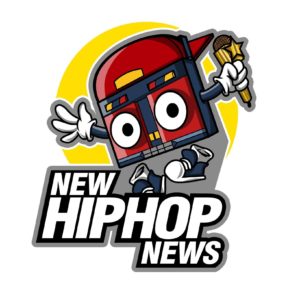In the very early 2000s, Nerdcore, a unique and vibrant subgenre of Hip Hop emerged. Subsequently, this musical movement has transcended the boundaries of traditional Hip Hop. It has since created a sonic space where rhymes are spun around video game controllers, comic books, and the complex algorithms of computer code. In the whimsical world of geek rap, MCs proudly wear their nerd badges, turning niche interests into lyrical masterpieces.
Over the years, this community of passionate artists has, in their own way, transformed the stereotypical image of Hip Hop. Through Nerdcore, they have infused rap with the essence of things like gaming lore and science fiction sagas. Moreover, they have also included technological aspects that usually captivate the minds of nerds and geeks worldwide. Let’s explore the history and evolution of Nerdcore from the early days until now.
How It All Began
Nerdcore’s origins can be traced back to the early 2000s. The subgenre emerged as a grassroots movement within the broader Hip Hop scene. As a matter of fact, the term “nerdcore” itself is attributed to MC Frontalot. He is widely regarded as one of the pioneers of the genre. In fact, he was given the moniker “The Godfather of Nerdcore.” Kicking off in 2000, his music laid the groundwork for the genre. On the 2000 track “Nerdcore Hip Hop” by Frontalot, the MC explicitly referred to his music by its moniker. With that, he became the first rapper to call his music by that name.
Frontalot is a rapper known for his witty and intelligent lyrics centered around geek culture. His clever wordplay and unabashed celebration of geekdom struck a chord with the niche audience who felt underrepresented in mainstream Hip Hop. However, it’s important to note that before the explicit categorization of nerdcore, there were already Hip Hop artists incorporating nerd culture references into their lyrics. For example, the likes of MF Doom, Kool Keith, and Deltron 3030 made music with geeky subject matters and themes. Nonetheless, it was the emergence of a distinct community and identity that defined Nerdcore.
What Is Nerdcore Known For?
Nerdcore distinguishes itself by revolving around video games, comic books, sci-fi, technology, and other aspects of geek culture. The lyrics are filled with references to obscure movies, computer programming, and the joys and struggles of being a nerd. However, unlike mainstream Hip Hop, Nerdcore tends to forgo the conventional themes of street life, violence, women, and materialism. Instead, it opts for a more cerebral and introspective approach.
The Evolution Of Geek Rap
Over the years, Nerdcore has evolved and diversified, with artists incorporating a broader range of influences and styles. The subgenre’s appeal has extended beyond the imaginary walls of the internet. For example, it has led to live performances at conventions, gaming events, and even more dedicated Nerdcore concerts.
In 2008, the documentary Nerdcore Rising brought further attention to the movement. It specifically highlighted the challenges and triumphs of Nerdcore artists as they navigated the music industry. The film interviews key figures like MC Frontalot, MC Lars, Beefy, and others. It does a remarkable job of shedding light on the unique subculture they had cultivated.
It’s also important to note Nerdcore’s influences being utilized by popular rappers. Artists like Childish Gambino have borrowed elements of the subgenre into his work. Moreover, Tyler, the Creator has showcased an affinity for the genre and geekdom in general with his rap styles. While these artists can’t be explicitly categorized within the genre, they hover around it. Moreover, their embracing of uniqueness in rap has helped to inspire upcoming talents.
Conclusion
While the subgenre may not have achieved mainstream success on the same scale as traditional Hip Hop, its impact and influence continue to grow. Nerdcore artists have found a welcoming community that values their authenticity and celebrates the diverse interests that make up geek culture. Nerdcore is known for its clever lyrics, DIY mentality, and celebration of all things nerdy. Overall, it has created a space for artists and fans who may have felt overlooked in traditional Hip Hop.
[via]
The post What Is Nerdcore? The Evolution Of Geek Rap appeared first on HotNewHipHop.




